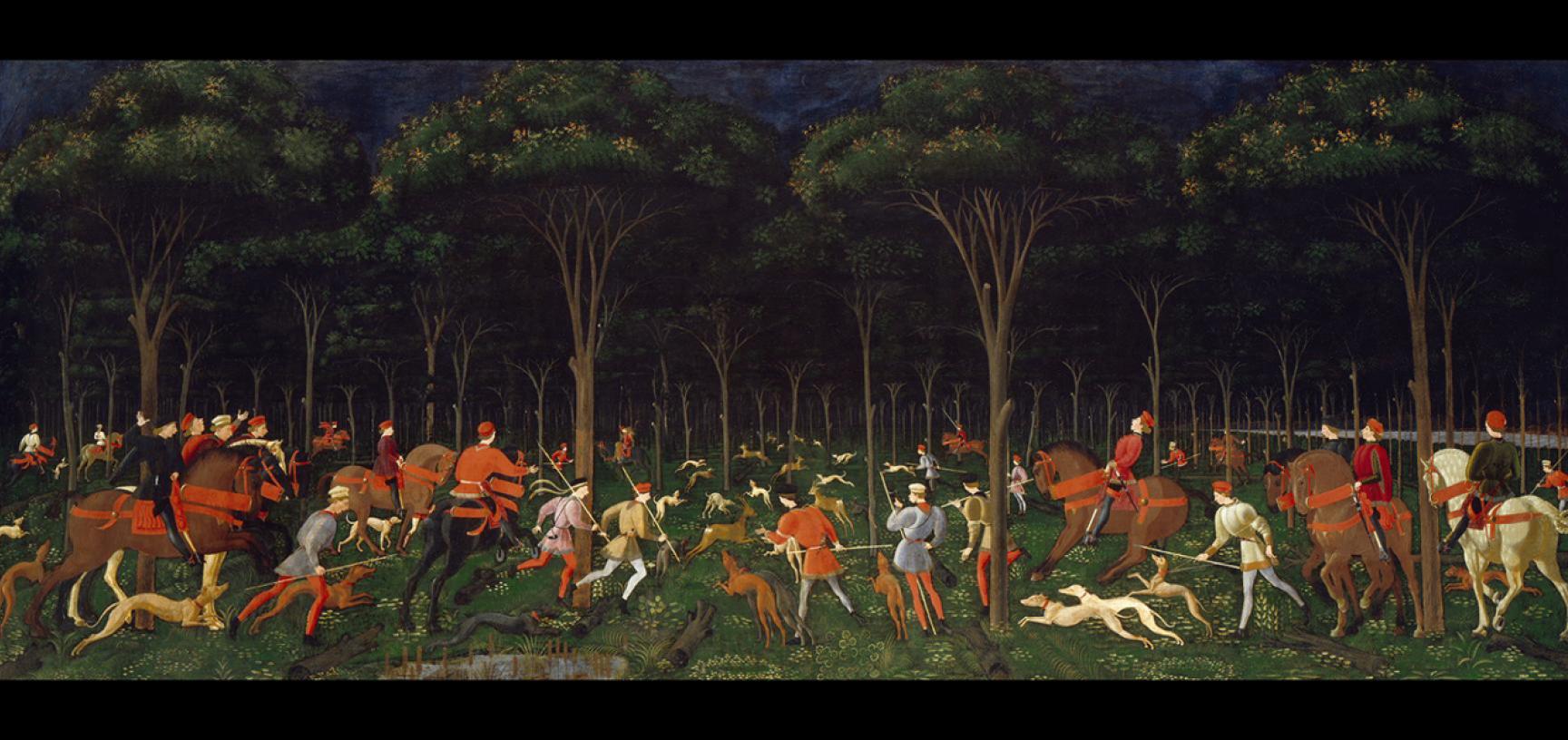
My eye is immediately drawn to the vanishing point of the painting, because that is what the use of perspective here is designed to do. My eye follows the leaping hunting dogs into the rows of trees and beyond to where every figure is excitedly heading. Everything about this piece screams symmetry, from the way the trees are positioned to the depiction of the animals and humans. Uccello has even laid down tree stumps and branches on the ground to point the viewer in the direction of one point perspective. By using these foreshortened logs he is spelling it out to the viewer - here is the perfection of Renaissance painting.
Although it may not be the most detailed painting in terms of the actual figures, everyone is at least doing something different. From the figures running into the trees to the men on horseback waving their arms to point the way for the viewer and the other hunters, this is a painting of movement and excitement. You can almost hear the cry of the dogs and calls of the men as they shout to one another for encouragement, firing the dogs into a frenzy in preparation for the meat they are about to catch. Furthermore, the viewer has a panoramic view of the forest, which not only involves them more fully within the painting but intrigues them as to what is occurring in the distance. Uccello has used a colour palette that goes from light to dark, meaning the viewer is being drawn into the darkness, making them ask questions about what is out there. Will this party be successful in their hunt? Or is this actually just a false alarm, and nothing will be caught at all? There is not just excitement in this painting, but there is intrigue. And this links back to the use of perspective.
Uccello was a master of linear perspective, and this painting is a great example, linking closely with the design of the perhaps more famous The Battle of San Romano. There the viewer sees not logs but lances to mark the perspective. Equally in the painting above Uccello has created that grid-like pattern to show his talent as an artist. Although Uccello may have glorified the hunt somewhat here, it does not lack emotion and drama. But with the dark sky and rolling clouds coming in, perhaps Uccello is foreshadowing an unsuccessful hunt after all.
Comments
Post a Comment